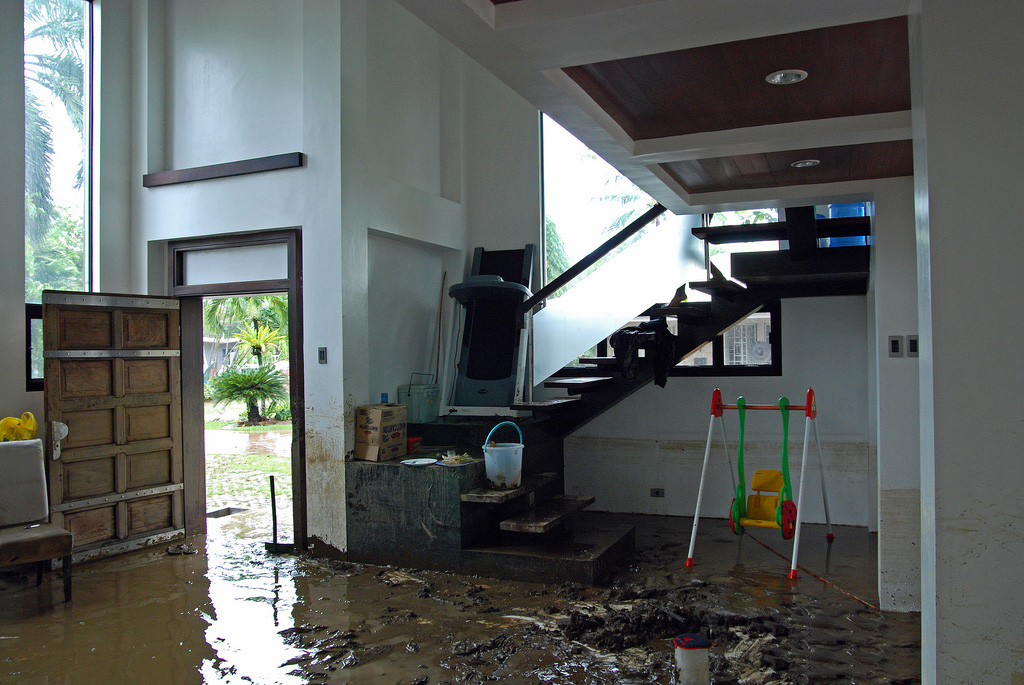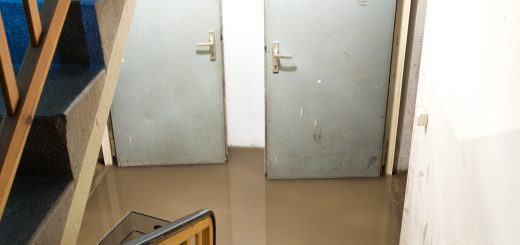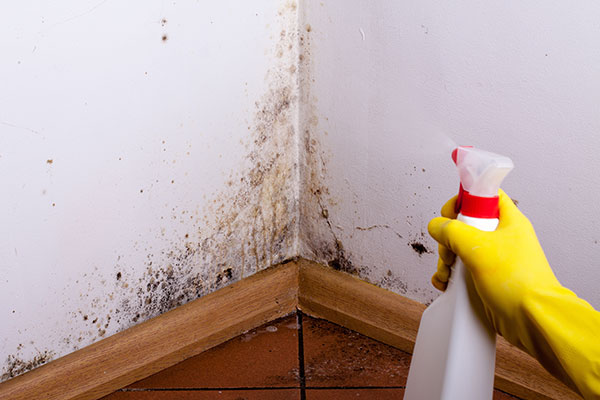Tips for Removing Black Mold from Basement Walls
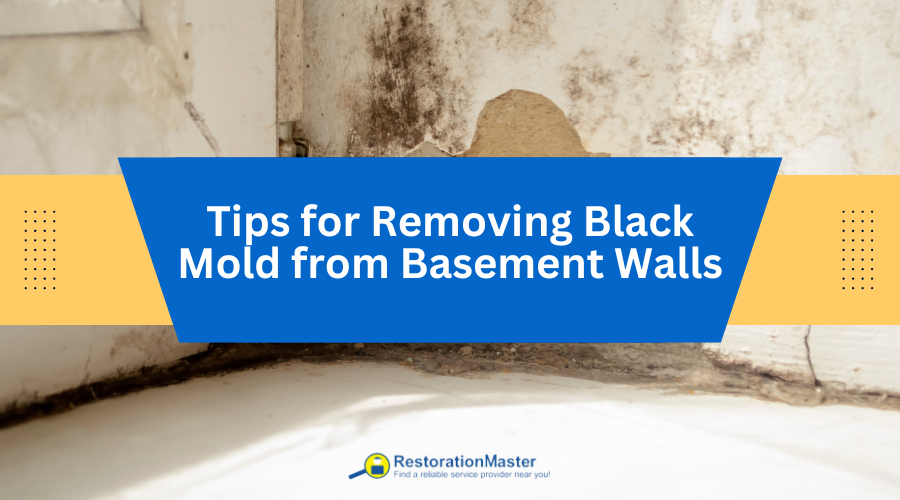
If you experience a moldMold is a type of fungus that grows in damp or humid conditi... More outbreak on your basement walls, it could be a major issue as it can cause staining on your walls, bad odors as the moldMold is a type of fungus that grows in damp or humid conditi... More sporesSpores are microscopic reproductive units of fungi or mold t... More spread, and health issues for those who are exposed. It can also damage the structureStructure refers to the framework or components of a buildin... More of your home by eating away at the foundation and weakening the structureStructure refers to the framework or components of a buildin... More of the building.
It is important to understand what causes moldMold is a type of fungus that grows in damp or humid conditi... More in your basement, what types of moldMold is a type of fungus that grows in damp or humid conditi... More there are, how to get rid of it, and how to prevent it from appearing in the first place.
Causes of Mold in the Basement
There are many reasons why moldMold is a type of fungus that grows in damp or humid conditi... More may appear in your basement. Here are a few:
-
Extra Moisture
Extra moisture in your home may be caused by a leaky foundation or condensation which creates a mix of oxygenOxygen is a chemical element essential for combustion and li... More and moisture that can leadLead is a heavy metal that can be toxic to humans, especiall... More to moldMold is a type of fungus that grows in damp or humid conditi... More growth. At times, condensation is caused by electrical appliances that have been stored in a space with bad ventilationVentilation is the process of exchanging or circulating air ... More, which will eventually create moldMold is a type of fungus that grows in damp or humid conditi... More growth.
-
Leaks
Leaks can be caused by a burst pipe or a faulty foundation, however, it can also be caused by improper maintenanceMaintenance is the routine care, inspection, and repair of a... More, leaky water heaters, or hydro-static pressure caused when the soil water table rises and causes a leak in the foundation.
-
Flooded Basement
Usually, flooding is what causes moldMold is a type of fungus that grows in damp or humid conditi... More growth in basements. As the water builds up, it can cause hydrostatic pressure to increase which leads to leaks and moisture that can result in moldMold is a type of fungus that grows in damp or humid conditi... More growth.
-
Sump Pump Failure
If your sump pumpA sump pump is a pump installed in a basement or crawlspace ... More is working properly, it will pump water out of the pit and away from your property. This helps keep your basement dry and free of moldMold is a type of fungus that grows in damp or humid conditi... More. If the sump pumpA sump pump is a pump installed in a basement or crawlspace ... More stops working correctly, it can cause a buildup of water around your home, and eventually leaks in your basement. This will create water damage and cause moldMold is a type of fungus that grows in damp or humid conditi... More growth.
Mold Types Formed in Basements
There are many types of moldMold is a type of fungus that grows in damp or humid conditi... More that can appear in your basement. Each type can cause staining to your basement walls and can be very toxic to humans.
There are two types of moldMold is a type of fungus that grows in damp or humid conditi... More:
- Allergenic
- Black moldMold is a type of fungus that grows in damp or humid conditi... More or Mycotoxin
Allergenic moldMold is a type of fungus that grows in damp or humid conditi... More is not a health risk for humans unless they are very sensitive to moldMold is a type of fungus that grows in damp or humid conditi... More or have asthma. However, black moldMold is a type of fungus that grows in damp or humid conditi... More is toxic to humans as it creates toxic chemicals called mycotoxinsMycotoxins are toxic substances produced by certain types of... More which are extremely dangerous for humans and pets.
The most common types of moldMold is a type of fungus that grows in damp or humid conditi... More in your basement include:
- Aspergillus
This is the most common household moldMold is a type of fungus that grows in damp or humid conditi... More as it grows well indoors. This type of moldMold is a type of fungus that grows in damp or humid conditi... More can be allergenic and some can be mycotoxin and should be removed by a moldMold is a type of fungus that grows in damp or humid conditi... More specialist. It appears dark green and can be found on walls, ceilings, and furniture. It does best in environments with high moisture and condensation.
- Fusarium
This type of moldMold is a type of fungus that grows in damp or humid conditi... More can be found in very wet areas. It grows if there is standing water due to floodingFlooding is the overflow or accumulation of water in areas t... More, damp walls, air vents, or humidifiers. It thrives in warm and humid environments. It is a yellowish color and produces mycotoxinsMycotoxins are toxic substances produced by certain types of... More which are dangerous for humans and pets. It grows and spreads quickly.
- Cladosporium
This type of moldMold is a type of fungus that grows in damp or humid conditi... More appears in areas with high condensation levels. It also thrives in cold environments as it doesn’t always need humid conditions to spread. It can be found in shower curtains, window air conditioning units, ceilings, bathrooms, etc.
- StachybotrysStachybotrys is a type of black mold (often called “black ... More
This moldMold is a type of fungus that grows in damp or humid conditi... More is also referred to as “black moldMold is a type of fungus that grows in damp or humid conditi... More.” StachybotrysStachybotrys is a type of black mold (often called “black ... More is a mycotoxin and is dangerous to humans. It has a musty odorAn odor is a smell, often detectable by the human nose, whic... More and is black in color. Generally, it is found in low-lit areas with high moisture.
If you’ve experienced moldMold is a type of fungus that grows in damp or humid conditi... More in your basement, make sure to reach out to a professional moldMold is a type of fungus that grows in damp or humid conditi... More restorationRestoration is the process of returning a property to its pr... More company to help you identify it.

Ways to Remove Mold from your Basement
There are many ways to remove moldMold is a type of fungus that grows in damp or humid conditi... More from your basement. However, before you start cleaning, you should figure out where the water damage is coming from. Whether it is coming from a leak, improper ventilationVentilation is the process of exchanging or circulating air ... More, or standing water, the issue that is causing the moldMold is a type of fungus that grows in damp or humid conditi... More should be resolved first. Here are some ways you can clean up your basement from moldMold is a type of fungus that grows in damp or humid conditi... More:
- Vinegar
This is a great way to remove moldMold is a type of fungus that grows in damp or humid conditi... More. You can just simply put the vinegar over the moldMold is a type of fungus that grows in damp or humid conditi... More and let it sit for a few minutes. After that, you can wipe it off with a cloth and it should be removed. This works for various surfaces.
- Tea Tree Oil
This is a great way to remove moldMold is a type of fungus that grows in damp or humid conditi... More from your basement as tea tree oils are a great fungicide. Make sure to first mix tea tree oil with water and shake well. You can then spray it on the affected surface and keep scrubbing until it disappears.
- Grapefruit Seed Extract
This is a great moldMold is a type of fungus that grows in damp or humid conditi... More remover, and it also prevents a reoccurrence of moldMold is a type of fungus that grows in damp or humid conditi... More growth. You should mix the grapefruit seed extract with water in equal parts and apply it to the moldy areas. Next, you will need to let it sit for a few minutes and then wipe it off with a spongeA sponge is a porous material used to absorb liquids or clea... More.
- Hydrogen Peroxide
This is a great non-toxic solutionA solution is a homogeneous mixture of two or more substance... More for removing moldMold is a type of fungus that grows in damp or humid conditi... More from your basement. You can mix it with water and spray on the affected areas and let it sit for at least ten minutes. Next, you will need to scrub it vigorously to remove any moldMold is a type of fungus that grows in damp or humid conditi... More and mildewMildew is a type of fungus that grows on damp surfaces, typi... More.
- Borax
To remove moldMold is a type of fungus that grows in damp or humid conditi... More with borax, it needs to be mixed properly as it can be toxic. A cup of Borax should be mixed with a gallon of water. You can apply the solutionA solution is a homogeneous mixture of two or more substance... More to the affected areas and then scrub it using a spongeA sponge is a porous material used to absorb liquids or clea... More. It also helps remove musty odors due to its deodorizing areas.
- Bleach
This is a very affordable solutionA solution is a homogeneous mixture of two or more substance... More that will kill moldMold is a type of fungus that grows in damp or humid conditi... More and its sporesSpores are microscopic reproductive units of fungi or mold t... More quickly and efficiently. However, the moldMold is a type of fungus that grows in damp or humid conditi... More roots can still regrow if they have the right conditions. Keep in mind that bleach cannot be used on carpets or fabrics. However, it can be used on all hard surfaces like tiles, bathtubs, etc. You should also be careful not to ingest it as can be toxic. Always have proper ventilationVentilation is the process of exchanging or circulating air ... More in place when using bleach as a cleaner.
- Concrobium
This is an EPA-approved moldMold is a type of fungus that grows in damp or humid conditi... More removal chemical. The great thing about it is that it is non-toxic, however, it can be expensive. When used in molded areas, it kills the moldMold is a type of fungus that grows in damp or humid conditi... More and prevents it from coming back. It can be used on wood, plastic, tile, and other surfaces.
- High-Efficiency Particle Absolute (HEPA) Vacuum Machines
HEPA vacuums can be used to remove moldMold is a type of fungus that grows in damp or humid conditi... More from walls so that no sporesSpores are microscopic reproductive units of fungi or mold t... More are left. Vacuuming with these machines regularly if they have high humidityHumidity is the amount of moisture or water vapor present in... More will prevent moldMold is a type of fungus that grows in damp or humid conditi... More growth.
Preventing Mold in Your Home
It is important to take precautions and try and prevent moldMold is a type of fungus that grows in damp or humid conditi... More from forming in your home. Here are a few tips: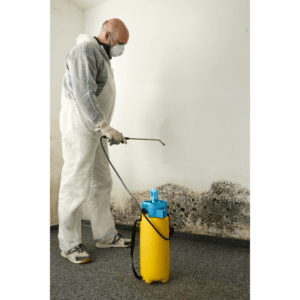
- Negative air pressure machines can be used to filter and clean the air in your basement which will prevent the moldMold is a type of fungus that grows in damp or humid conditi... More sporesSpores are microscopic reproductive units of fungi or mold t... More from growing.
- Fix any leaks and cracks in the foundation. If you have a sump pumpA sump pump is a pump installed in a basement or crawlspace ... More failure, make sure to fix it quickly.
- Install a dehumidifierA dehumidifier is a device that removes excess moisture from... More in any area with high humidityHumidity is the amount of moisture or water vapor present in... More. The moisture level should always be below 60%.
- Your foundation should be sealed with a dry gypsum wall and a primer.
- Have a moldMold is a type of fungus that grows in damp or humid conditi... More inhibitor handy and mix it with paint when painting the walls in your basement.
- Always check and make sure that your gutters are not clogged and make sure the area around the basement slopes away from the home.
If you’ve experienced water damage at your home or business that has created moldMold is a type of fungus that grows in damp or humid conditi... More, call a mold remediation professional right away. No matter the level of moldMold is a type of fungus that grows in damp or humid conditi... More growth in your home, mold remediationMold remediation is the process of identifying, removing, an... More professionals will isolate and remove the moldMold is a type of fungus that grows in damp or humid conditi... More and restore the damage it caused.










